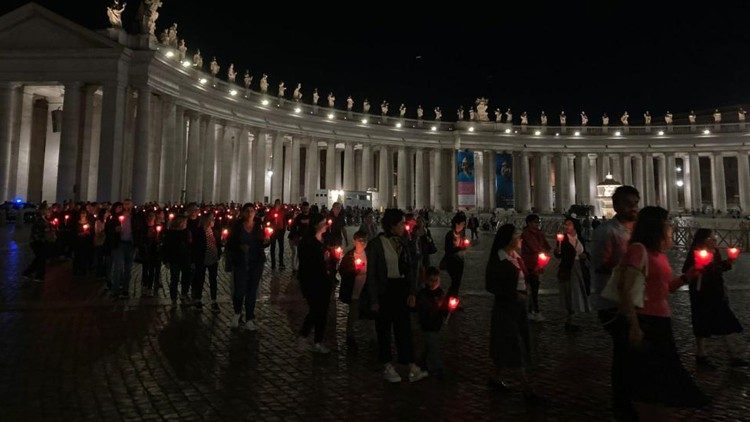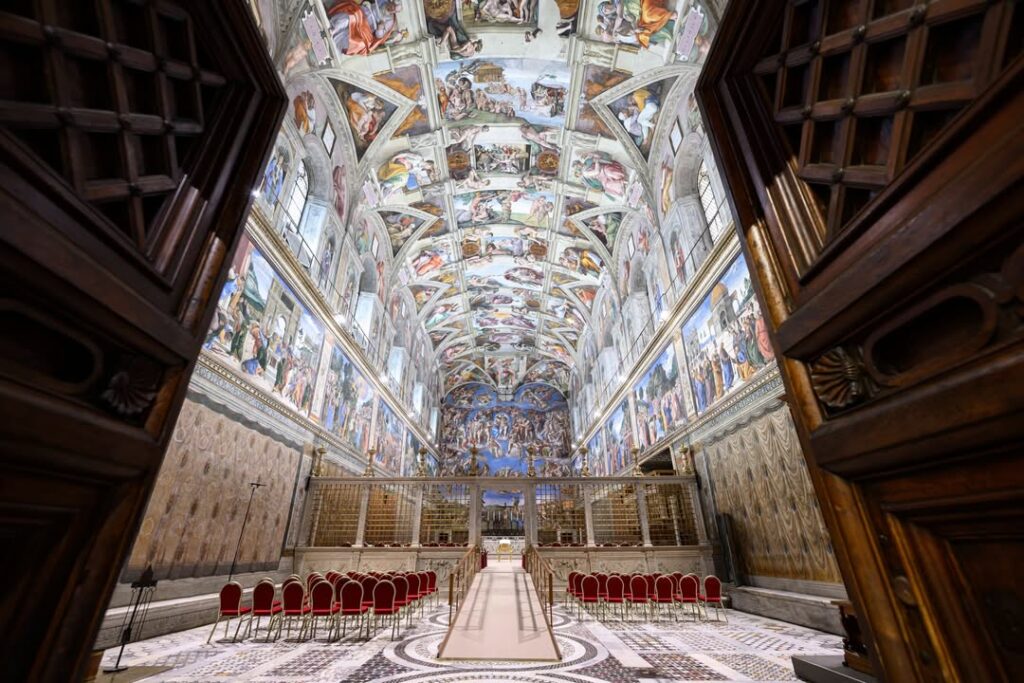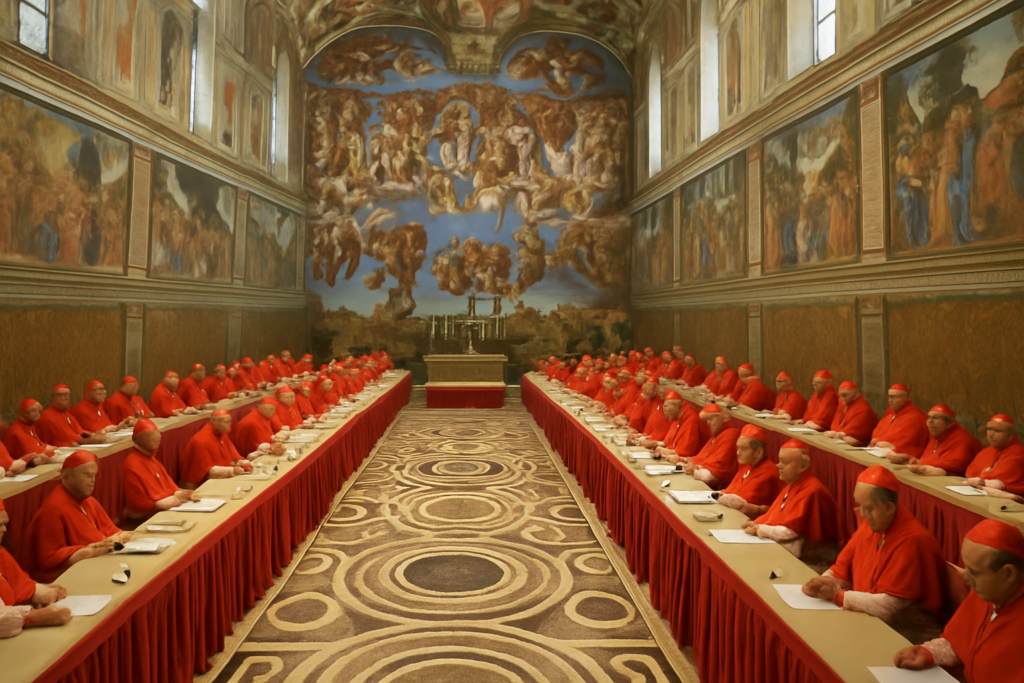The Conclave: Procedure and Norms for the Election of the Pope
According to Pope John Paul II's Apostolic Constitution "Universi Dominici Gregis"

The election of a new Pope, in a process known as the Conclave, is regulated by precise canonical norms that have evolved over the centuries. One of the primary sources establishing the current procedure is the Apostolic Constitution “Universi Dominici Gregis“, promulgated by Pope John Paul II on February 22, 1996.
This important legal provision came into effect after the death of Pope John Paul II and was later amended by Pope Benedict XVI in 2007, who eliminated the possibility of the College of Cardinals adopting a compromise vote (a combination of two-thirds plus one vote or a simple majority), leaving only the two-thirds vote system required for the election of the new Pontiff.
What is the Conclave?
The term conclave comes from the Latin “cum clavis” (with a key) and refers to the place where cardinal electors—those under the age of 80—are confined during the papal election process. This isolation seeks to ensure impartiality, prayer, and reflection in an atmosphere of total discretion.
The conclave takes place in the Sistine Chapel in the Vatican, where the cardinals live, pray, and deliberate until the new pope is elected.
Main Phases of the Conclave
The process to elect a new pope is one of the most important and solemn events in the Catholic Church. This process is divided into several clearly defined phases, each with strict rules established by canon law.
1. Apostolic Vacancy: Beginning of the Interregnum Period
The apostolic vacancy officially begins with the death of the Pope or his formal resignation, as occurred with Pope Benedict XVI in 2013.
During this period:
- The Camerlengo of the Holy Roman Church (currently Cardinal Kevin Farrell) publicly verifies the Pope’s death before officials of the Papal Court.
- The Fisherman’s Ring, a symbol of papal power, is broken or marked.
- The Vatican Secret Archives are closed until a new Pope is elected.
- The government of the Church is vested in the College of Cardinals, which is limited to ordinary and urgent matters and cannot make significant changes.
🔶 Note: During a vacancy, there is no Head of State in Vatican City.
2. Funeral of the Deceased Pope
If the Pope has died, solemn funeral services are held in St. Peter’s Basilica. His body is laid out for several days, usually in the basilica, allowing the faithful to say their farewells.
3. General Congregations of the Cardinals
Before the conclave begins, the cardinals (both electors and non-electors) meet in General Congregations to prepare the details of the conclave.
These meetings take place in the Vatican and serve to:
- Discuss urgent matters of the Church.
- Organize the logistics of the conclave.
- Determine dates and times for its start.
- Hear reports on potential problems in the Roman Curia.
The congregations are also moments where the cardinals can exchange opinions, although without campaigning or promoting specific candidates.
4. Congregation for the Celebration of the Conclave
This is a specific meeting in which the final details of the conclave are established, including:
- Confirmation of the venue (usually the Sistine Chapel and accommodations at the Casa Santa Marta).
- Oath of office for organizers and supporting staff.
- Designation of scrutinators, infirmarii, and other necessary roles during the voting.
5. Entry into the Conclave
The cardinal electors (under 80 years of age) enter the Sistine Chapel in solemn procession, swearing absolute secrecy under penalty of excommunication latae sententiae (automatic).
During this phase:
- The traditional phrase “Extra omnes” (“Let everyone leave”) is uttered, indicating that only the electors will remain inside.
- The cardinals perform a common prayer before the voting begins.
6. Secret Ballots (Scrutinium)
This is the core of the conclave. Voting is conducted by secret, written ballots, following a highly structured ritual.
Voting Process:
- Ballot Writing: Each cardinal writes the name of the chosen candidate in Latin.
- Ballot Casting: Each cardinal casts their vote in a ballot box in front of everyone else.
- Counting (Scrutinio): Three groups of three cardinals (scrutinators) count the votes separately to ensure accuracy.
- Verification and Announcement: The results are compared and announced to the group.
- Burning of Votes: At the end of each day, the ballots are burned. If there is no result, a chemical is added to generate black smoke; if a pope is elected, the smoke is white.
Requirements for Election:
- A candidate must obtain at least two-thirds of the votes cast (this changed after Benedict XVI’s reform, which eliminated the possibility of a simple majority after many unsuccessful votes).
- The elected cardinal must be baptized and have the capacity to accept the Petrine ministry (not necessarily a cardinal, although historically they have always been).
7. Election and Acceptance of the New Pope
When a candidate reaches two-thirds of the votes, he is asked if he accepts the election. The traditional formula is:
“Acceptas electionem de te canonice factam in Summum Pontificem?”
(Do you accept the canonically made election of you as Supreme Pontiff?)
If he answers affirmatively, he is asked what name he wishes to use as Pope.
At that moment, he becomes Pope and Bishop of Rome in his own right.
8. Public Proclamation: “Habemus Papam”
After the election, from the central balcony of St. Peter’s Basilica, the Dean of the College of Cardinals or the Cardinal Protodeacon announces to the world:
“Habemus Papam…”
(We have a Pope…) followed by the chosen name and papal title.
The new Pope then appears for the first time before the faithful gathered in St. Peter’s Square, offering his first Urbi et Orbi (“to the city and the world”) blessing.
9. Solemn Entry and Inauguration Ceremony
Although he is already Pope from the moment he accepts the throne, a solemn inauguration ceremony is held. In recent papacies, this has taken the form of an Inauguration Mass presided over by the new Pope, rather than the old Coronation with the Tiara.
During this Mass:
- The Pope receives the Pallium (a symbol of pastoral authority).
- His public ministry as leader of the Catholic Church officially begins.
Key Features of the Conclave
- Total Isolation: The cardinals are completely separated from the outside world.
- Ritual Transparency: Everything is regulated by precise norms and ancient rituals.
- Absolute Confidentiality: It is forbidden to communicate with the outside world or reveal details of the process. Those who do so are automatically excommunicated.
- Relative speed: Although in the past, councils could last for months, today they are sought for a more agile resolution thanks to modern organization.
Key features according to “Universi Dominici Gregis”
- Only cardinals under 80 years of age can be electors.
- The election must take place in Vatican City, except in exceptional circumstances.
- Cardinals must live in austerity and separation from the outside world during the conclave.
- The entire process is confidential, under penalty of excommunication for those who reveal internal details.
The Conclave is a deeply spiritual and canonical event, designed to ensure that the election of the Successor of Saint Peter takes place in an environment of prayer, unity, and freedom from external pressure. The Apostolic Constitution “Universi Dominici Gregis” establishes the clear and solemn foundations that guide this crucial moment in the life of the Catholic Church.
Related

Today the conclave begins: What can we Catholics do?
Javier Ferrer García
07 May, 2025
5 min

Sistine Chapel and Hall of Tears
Exaudi Staff
07 May, 2025
1 min

The 12 General Congregations: Discernment and Call for Peace Before the Conclave
Exaudi Redazione
07 May, 2025
4 min

Inside the Conclave: The Pope’s Election as Never Told Before
Exaudi Staff
05 May, 2025
6 min
 (EN)
(EN)
 (ES)
(ES)
 (IT)
(IT)

